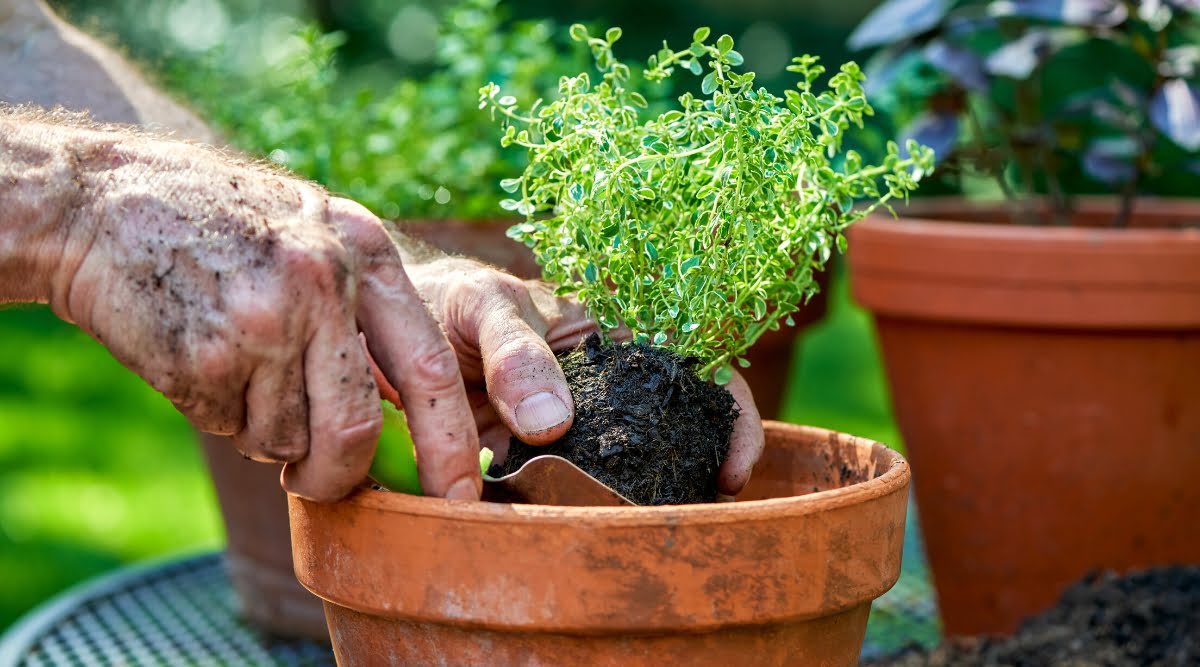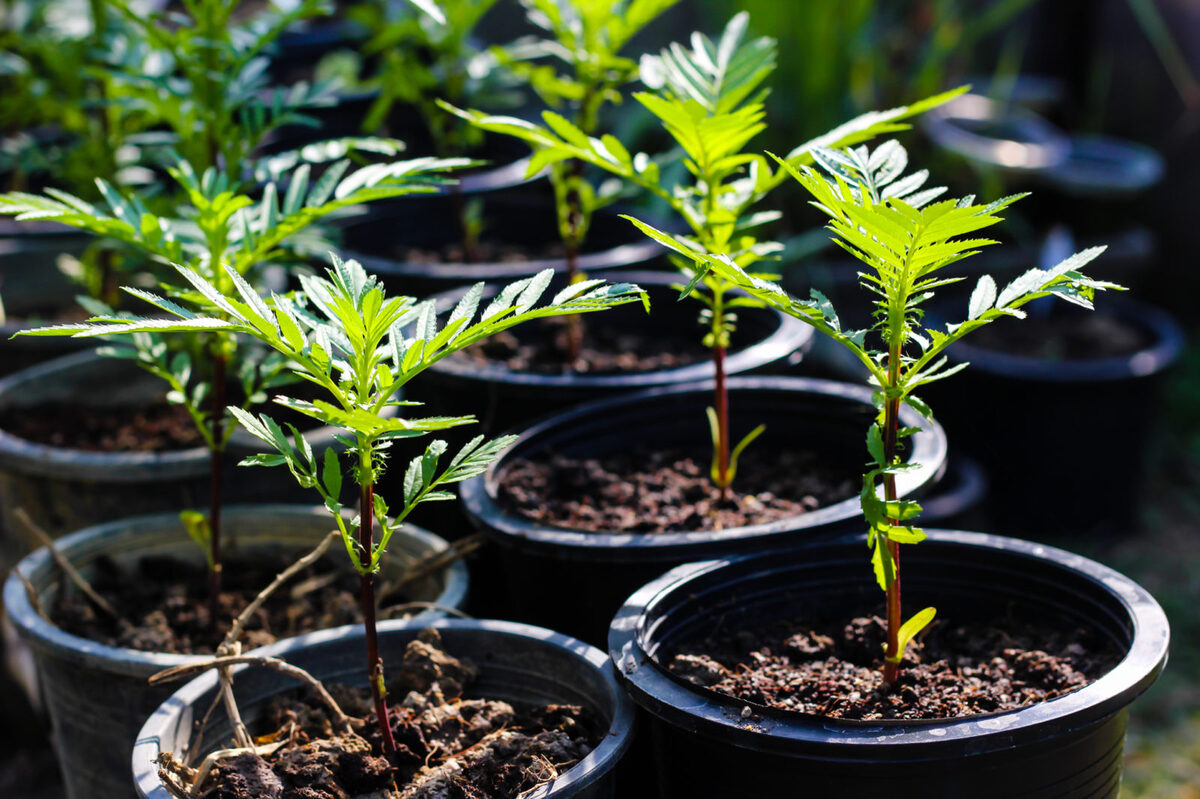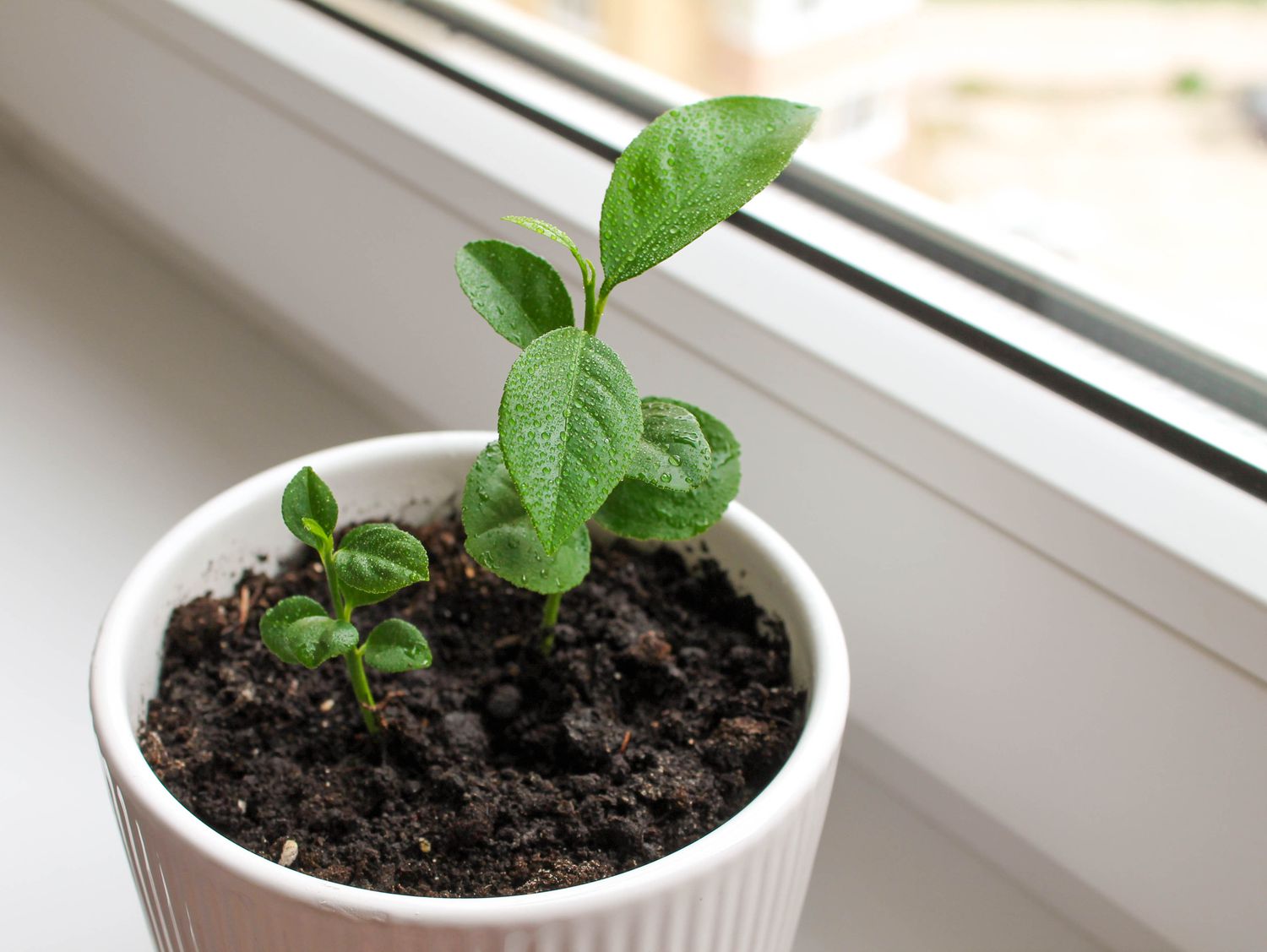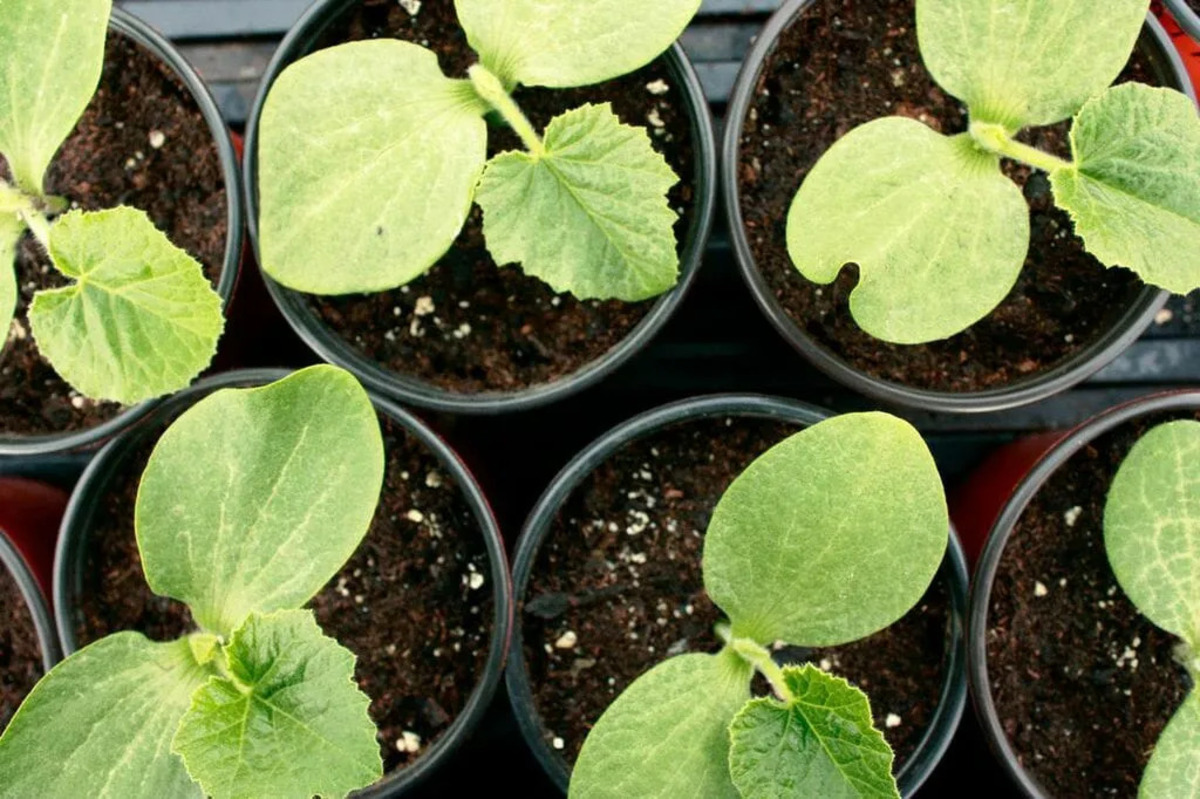Home>Gardening Techniques>Plant Care>When To Transplant Onion Seedlings Outside


Plant Care
When To Transplant Onion Seedlings Outside
Published: January 5, 2024
Learn the best time to transplant onion seedlings outdoors and get expert plant care tips for successful growth. Discover when and how to move your onion plants for optimal results.
(Many of the links in this article redirect to a specific reviewed product. Your purchase of these products through affiliate links helps to generate commission for Chicagolandgardening.com, at no extra cost. Learn more)
Table of Contents
**
Introduction
**
Transplanting onion seedlings outside is a crucial stage in the journey of nurturing these flavorful and versatile plants. By understanding the optimal time and method for this process, you can set the stage for a bountiful harvest of fresh, homegrown onions. In this comprehensive guide, we will delve into the intricacies of transplanting onion seedlings, equipping you with the knowledge and confidence to ensure the success of your onion-growing venture.
Onions, a staple ingredient in countless culinary creations, are a rewarding addition to any garden. Whether you"re a seasoned gardener or a novice enthusiast, the prospect of cultivating your own onions can be both exciting and fulfilling. However, the journey from seedling to mature plant requires careful attention and a deep understanding of the plant"s needs. This guide will walk you through the process of transplanting onion seedlings, shedding light on the key considerations and best practices that will maximize the potential of your onion crop.
As we embark on this exploration of transplanting onion seedlings, we will uncover the optimal timing for this pivotal step, the essential preparations for the outdoor site, and the meticulous process of transplanting the seedlings. Furthermore, we will discuss the crucial measures for caring for the transplanted seedlings, ensuring their continued growth and development. By the end of this guide, you will be well-equipped to navigate the intricacies of transplanting onion seedlings outside, setting the stage for a flourishing onion harvest. So, let"s embark on this horticultural journey and unlock the secrets to successfully transplanting onion seedlings.
Understanding Onion Seedlings
Before delving into the process of transplanting onion seedlings outside, it is essential to grasp the fundamental characteristics and requirements of these young plants. Onion seedlings typically emerge from seeds sown indoors, where they are nurtured in a controlled environment until they develop into sturdy, green shoots. During this initial stage, the seedlings" delicate roots and tender foliage require attentive care to ensure robust growth and successful transplantation.
Onion seedlings exhibit distinct features that distinguish them from mature onion plants. These young seedlings boast slender, vibrant green leaves and delicate, thread-like roots, signifying their early stage of development. As they mature indoors, they gradually develop a sturdy, healthy appearance, preparing them for the transition to an outdoor environment. Understanding the visual cues of healthy onion seedlings is crucial for determining the optimal time to transplant them, as robust, well-established seedlings are more likely to thrive when relocated to an outdoor setting.
Furthermore, comprehending the specific needs of onion seedlings is integral to their successful transplantation. These young plants thrive in well-draining, nutrient-rich soil and require ample sunlight to support their growth. Additionally, maintaining consistent moisture levels is vital for nurturing healthy onion seedlings, as fluctuations in watering can compromise their development. By familiarizing yourself with the unique characteristics and requirements of onion seedlings, you can cultivate a deeper appreciation for these resilient plants and provide them with the care they need to flourish.
As we delve deeper into the process of transplanting onion seedlings, this foundational understanding of their characteristics and needs will serve as a valuable compass, guiding us toward optimal practices for their successful relocation. With this knowledge in hand, we are poised to explore the next crucial steps in the journey of nurturing and transplanting onion seedlings outside.
**
Choosing the Right Time to Transplant
**
Transplanting onion seedlings outside at the opportune moment is a pivotal factor in ensuring their successful acclimatization to the outdoor environment. The timing of this transition plays a significant role in the seedlings" ability to thrive and mature into robust onion plants. To determine the right time for transplanting, it is essential to consider various factors, including the seedlings" stage of growth, local climate, and the anticipated conditions in the outdoor planting site.
One of the primary indicators for selecting the ideal time to transplant onion seedlings is their stage of development. As the seedlings mature indoors, they gradually develop sturdy stems and vibrant foliage, signaling their readiness for transplantation. Typically, onion seedlings are ready for transplanting when they have grown to a height of approximately 6-8 inches and exhibit a healthy, robust appearance. At this stage, the seedlings are better equipped to withstand the rigors of outdoor conditions, making their transition more seamless and conducive to successful growth.
Moreover, understanding the local climate and weather patterns is crucial in determining the optimal timing for transplanting onion seedlings. It is advisable to wait until the threat of frost has passed and the soil temperature has sufficiently warmed before transplanting the seedlings outdoors. This precaution helps safeguard the tender seedlings from potential damage due to cold temperatures, ensuring that they can thrive in the outdoor environment.
Considering the anticipated conditions in the outdoor planting site is equally important when choosing the right time to transplant onion seedlings. Assessing factors such as sunlight exposure, soil quality, and moisture levels in the designated planting area enables you to gauge whether the site is conducive to supporting the transplanted seedlings" growth. By aligning the timing of the transplant with favorable outdoor conditions, you can optimize the seedlings" prospects for flourishing in their new environment.
By carefully considering the seedlings" developmental stage, local climate, and the conditions of the outdoor planting site, you can pinpoint the optimal time to transplant onion seedlings outside. This strategic approach sets the stage for a smooth transition and establishes favorable conditions for the seedlings to thrive and mature into robust, productive onion plants.
Preparing the Outdoor Site
Creating a conducive and nurturing environment in the outdoor planting site is imperative for facilitating the successful transition of onion seedlings from indoor cultivation to their new outdoor home. Preparing the designated site with careful attention to soil quality, sunlight exposure, and moisture levels is essential for ensuring the seedlings" seamless acclimatization and continued growth in their outdoor environment.
Assessing the soil quality in the outdoor planting site is a critical first step in preparing for the transplantation of onion seedlings. The soil should be well-draining and rich in nutrients to support the seedlings" growth and development. Amending the soil with organic matter, such as compost or well-rotted manure, can enhance its fertility and structure, creating an optimal foundation for the transplanted seedlings. Additionally, ensuring that the soil pH is within the preferred range for onions, typically around 6.0-7.5, is essential for promoting healthy growth and maximizing the seedlings" potential.
Another key consideration in preparing the outdoor site is evaluating the sunlight exposure available in the designated area. Onions thrive in full sunlight, requiring a minimum of 6-8 hours of direct sunlight daily to support their growth and bulb development. Selecting a site that receives ample sunlight and has minimal obstructions ensures that the transplanted seedlings can harness the energy they need to flourish in their new outdoor environment.
Furthermore, maintaining appropriate moisture levels in the outdoor planting site is vital for the successful establishment of transplanted onion seedlings. Adequate irrigation infrastructure, such as soaker hoses or drip irrigation, can help ensure consistent moisture levels in the soil, promoting healthy root development and minimizing stress on the seedlings. By preparing the outdoor site to maintain optimal moisture levels, you can create a supportive environment that fosters the seedlings" adaptation and sustained growth.
By meticulously preparing the outdoor planting site, addressing soil quality, sunlight exposure, and moisture levels, you can lay the groundwork for the successful transition of onion seedlings from indoor cultivation to their new outdoor habitat. This strategic preparation sets the stage for the seedlings to thrive in their outdoor environment, maximizing their potential to develop into robust, productive onion plants.
Transplanting Onion Seedlings
As the culmination of careful nurturing and preparation, the process of transplanting onion seedlings from their indoor environment to the outdoor planting site is a pivotal step in their journey to maturity. Executing this transition with precision and care is essential for ensuring the seedlings" successful acclimatization and continued growth in the outdoor environment. By following best practices for the transplanting process, you can provide the seedlings with the optimal conditions for thriving in their new outdoor habitat.
Prior to transplanting the seedlings, it is advisable to prepare the outdoor planting site by creating evenly spaced furrows or rows to accommodate the seedlings. Ensuring adequate spacing between the transplanted seedlings promotes optimal air circulation and allows room for their mature growth and bulb development. Additionally, gently watering the furrows prior to transplanting helps to settle the soil and create a hospitable environment for the seedlings" roots.
When transplanting the seedlings, it is crucial to handle them with care to minimize stress and potential damage. Gently loosening the soil around each seedling and carefully lifting them from their containers or seed trays helps preserve their delicate roots and foliage. Placing the seedlings into the prepared furrows at a depth that allows the base of the foliage to sit at ground level promotes their stability and encourages healthy growth.
After transplanting the seedlings, providing them with a thorough watering helps to settle the soil around their roots and alleviate any transplant shock. Additionally, applying a layer of organic mulch, such as straw or shredded leaves, around the transplanted seedlings helps conserve soil moisture and suppress weed growth, creating an optimal environment for their continued development.
Throughout the transplanting process, maintaining a gentle and attentive approach is essential for safeguarding the seedlings" well-being and setting the stage for their successful adaptation to the outdoor environment. By adhering to best practices and handling the seedlings with care, you can optimize their prospects for thriving in their new outdoor habitat, paving the way for a rewarding harvest of homegrown onions.
Caring for Transplanted Onion Seedlings
After the meticulous process of transplanting onion seedlings to their outdoor habitat, providing attentive care is essential for nurturing their continued growth and ensuring their successful adaptation to the outdoor environment. Implementing strategic measures to support the transplanted seedlings, including vigilant watering, weed management, and monitoring for potential pests and diseases, is integral to fostering their development into robust, productive onion plants.
Consistent and adequate watering is paramount for sustaining the growth and vitality of transplanted onion seedlings. Ensuring that the soil remains evenly moist, without becoming waterlogged, supports healthy root development and minimizes stress on the seedlings. Regularly monitoring soil moisture levels and adjusting the watering frequency based on environmental conditions and the seedlings" needs is crucial for maintaining optimal growing conditions.
Managing weed growth around the transplanted seedlings is essential for minimizing competition for nutrients and reducing the risk of pest infestations. Gently cultivating the soil around the seedlings to remove emerging weeds and applying a layer of organic mulch helps suppress weed growth and conserve soil moisture, creating a conducive environment for the seedlings" continued development.
Monitoring the transplanted onion seedlings for potential pests and diseases is a proactive measure that can safeguard their well-being and prevent detrimental infestations. Regular inspection of the foliage for signs of pest activity, such as discoloration or damage, enables early intervention to mitigate potential threats. Additionally, maintaining good air circulation around the seedlings and avoiding overcrowding can help minimize the risk of disease development.
As the transplanted onion seedlings continue to acclimate to their outdoor environment, providing them with ongoing care and attention sets the stage for their successful development into mature onion plants. By implementing strategic measures to maintain optimal growing conditions, manage weed growth, and monitor for potential pests and diseases, you can nurture the transplanted seedlings and maximize their potential for yielding a bountiful harvest of fresh, flavorful onions.
Conclusion
Embarking on the journey of transplanting onion seedlings outside is a rewarding endeavor that encompasses careful nurturing, strategic planning, and attentive care. By understanding the unique characteristics and requirements of onion seedlings, as well as the optimal timing and best practices for their transplantation, you can set the stage for their successful acclimatization and continued growth in the outdoor environment. As the seedlings transition from their indoor cultivation to their new outdoor habitat, providing them with the necessary care and support is essential for fostering their development into robust, productive onion plants.
Throughout this comprehensive guide, we have explored the intricacies of transplanting onion seedlings, delving into the critical considerations and best practices that underpin this transformative process. From understanding the visual cues of healthy seedlings to preparing the outdoor site with meticulous attention to soil quality and sunlight exposure, each step plays a vital role in ensuring the seedlings" successful transition and sustained growth.
As the transplanted onion seedlings take root in their outdoor environment, providing them with attentive care, vigilant watering, and proactive pest and disease management is integral to nurturing their continued development. By implementing these strategic measures, you can create an optimal environment for the seedlings to thrive, maximizing their potential to yield a bountiful harvest of fresh, flavorful onions.
Transplanting onion seedlings outside is not merely a horticultural task; it is a journey of nurturing and growth, both for the plants and the gardener. As you witness the seedlings flourish and mature into robust onion plants, the satisfaction of cultivating your own homegrown produce becomes a tangible and gratifying reality. Whether you are a seasoned gardener or a novice enthusiast, the process of transplanting onion seedlings outside offers a fulfilling opportunity to connect with nature and savor the fruits of your labor.
Armed with the knowledge and insights gained from this guide, you are well-equipped to navigate the intricacies of transplanting onion seedlings, fostering their growth, and reaping the rewards of a flourishing onion harvest. As you embark on this horticultural journey, may the experience of nurturing and cultivating onion plants outside bring joy, fulfillment, and an abundant supply of fresh, flavorful onions to enrich your culinary creations and nourish your home and table.










